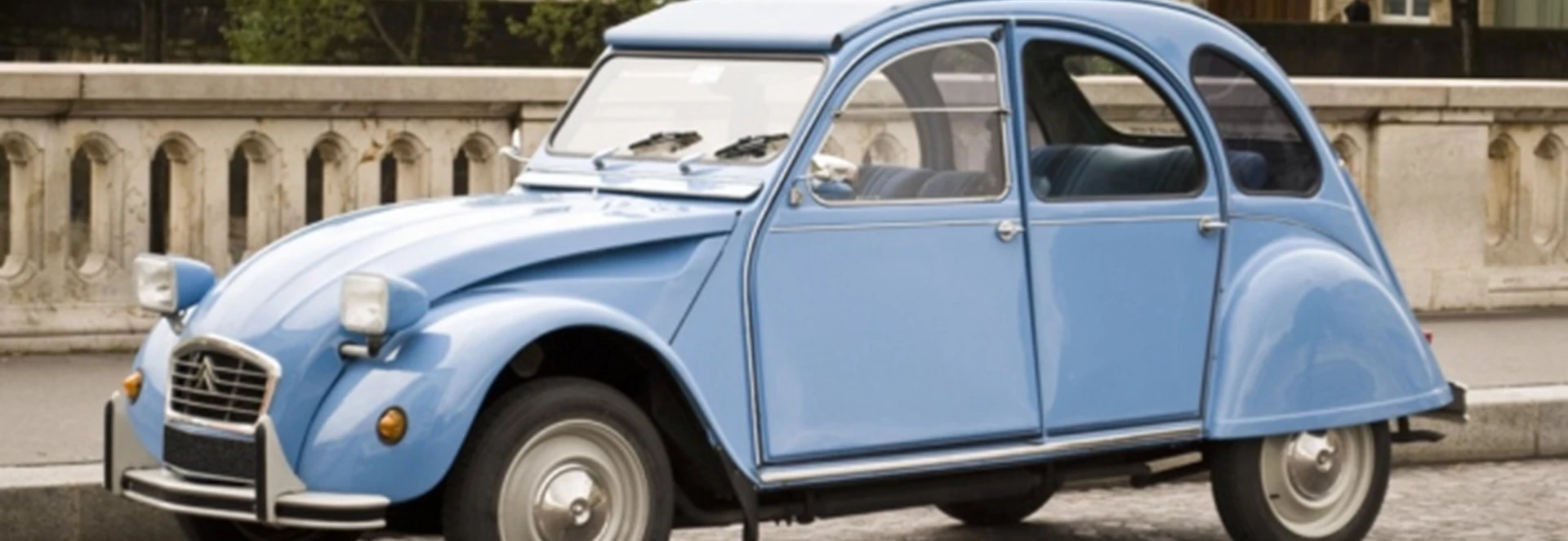What’s the most badass car you can think of? A BMW E30 M3? How about a Plymouth Barracuda or maybe even the Batmobile?
Wrong, wrong and wrong again, we’re afraid. In fact, the world’s coolest car is the Citroen 2CV, which yesterday celebrated 25 years since the last model rolled off its production line in Portugal.
It wasn’t fast, it wasn’t good looking and it’s no surprise that it was nicknamed the Tin Snail thanks to its output of a grand 9bhp courtesy of a hilariously tiny four-stroke engine.
Manufactured to replace cattle in the service of French peasants, it also came with an odd suspension setup which meant you could literally bounce it on its axles like a bobblehead, along with straps to hold the doors on.
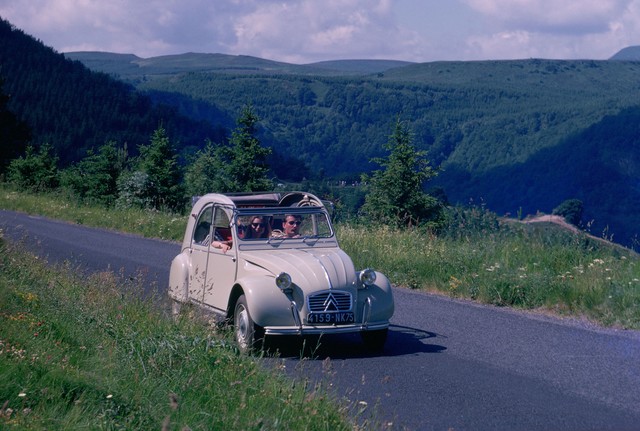
Still, it proved to be a best-seller, having remained in production for 42 years since it debuted in 1948, with more than nine million of the things sold worldwide in that timeframe.
As it turns out, it also proved itself to be a serious force to be reckoned with, at least according to a 1967 Dutch Citroen brochure called Highlights from the History of the 2CV.
Forget reams of specifications and options lists, Citroen instead decided to get straight to what we all want to know: how does this car compare to, say, John Rambo or Optimus Prime?
The answer, apparently, is pretty damn well. More than just a car, the 2CV was a bona fide bad-to-the-bone motor. It’s a war veteran, it’s a hero, it was a favourite amongst mysterious royal families and it also may or may not have magical abilities.
Shove your Ferrari F40, your Nissan GT-R and your Shelby Super Snake. The Citroen 2CV was, and still is, the most outrageously badass car of all time. Thanks to Citroen’s brochure, here’s finally proof of why:
It could run on ancient banana magic
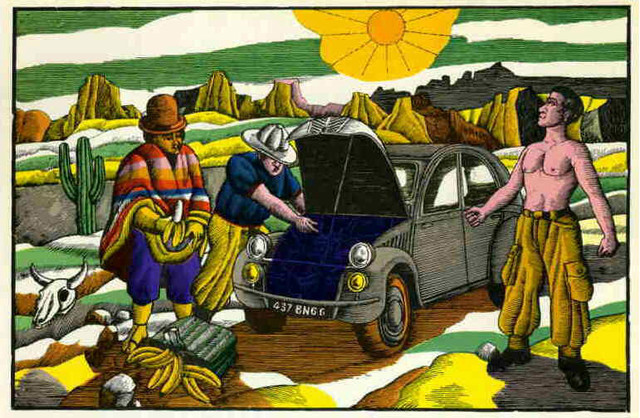
Back in 1958, two Frenchmen, Jacques Seguela and J.C. Baudot embarked on a round-the-world trip in a 2CV on behalf of Citroen.
Having already taken the dinky Tin Snail through Africa, they moved on to South America, where the 2CV was tackling a particularly tricky patch of rough terrain somewhere in the middle of the Chilean desert.
Halfway through the trek, the engine made a crunching sound and the car clattered to a halt. Diagnosing the problem, the pair found that the oil reservoir had run completely dry, and with nearly 2,000 miles between them and civilisation, things seemed pretty dire.
Enter a mysterious Native American, who appeared “suddenly, as if fallen from the sky”, according to Citroen. Without uttering a word to the pair of bewildered explorers, he took a number of bananas out of his bag, mashed them into the car’s crankcase and then continued on his way.
After that, the 2CV reportedly started up again, good as new, and completed the rest of its journey running on nothing other than smushed-up banana.
It might sound ridiculous, but after the expedition Jacques Seguela went on to help found one of the biggest advertising companies in the world, RSCG, and continues to swear by this story even today.
It captured the heart of an Indian Maharaja
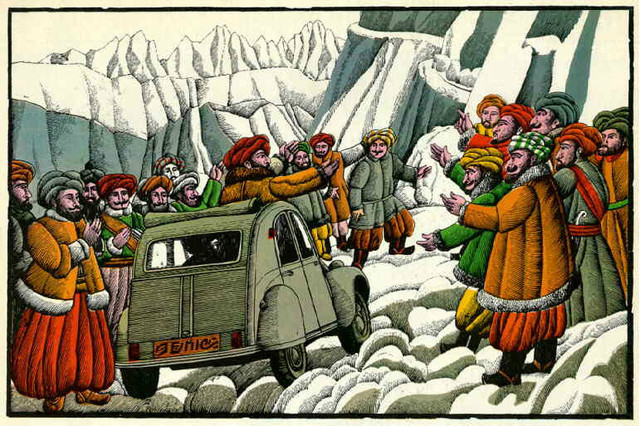
Remember that scene from Indiana Jones and the Temple of Doom where they get invited into the palace of a Maharaja in a small, mysterious kingdom in the Himalayas? Well, that’s pretty much what happened to the 2CV…
Early in 1958, Maharaja Kumar of Sikkim, a small principality in the north of India, decided that he’d become tired of the large and expensive cars usually offered to him as gifts, and instead demanded his servants bring him a 2CV.
Apparently, he liked it so much that he declared a grand expedition, with his palace workers instructed to find him a place of unforgettable beauty, with a severe climate and primitive tracks to take it out on.
In other words, he was just a massive petrolhead and wanted to find the best driving roads in all of his kingdom. Who’d have guessed that a car made for peasants would also be fit for a king?
It saved a load of swans from freezing to death
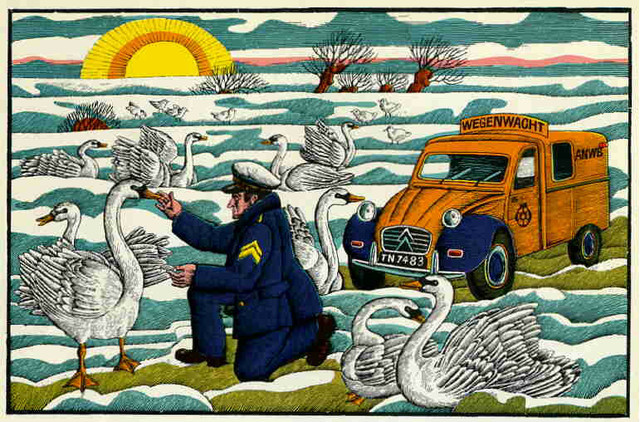
Nothing says hardcore badass like executing a well-planned rescue mission, and that’s exactly what the 2CV was used for in Holland. During the 1960s, it was a rescue car that helped stop swans from freezing to death in the middle of winter.
The Ijsselmeer lake in the north of Holland is home to swans and other wildlife but tends to freeze over during the cold months, leaving them “convicted to a horrible death” due to a lack of food, Citroen said.
At the time, the 2CV was the only car available that was light enough to be able to move across the frozen lake top, thanks to its bare-bones corrugated metal body, and it delivered food to the swans and even evacuated sick and weakened animals for urgent care.
It was a member of the Royal Navy Commandos
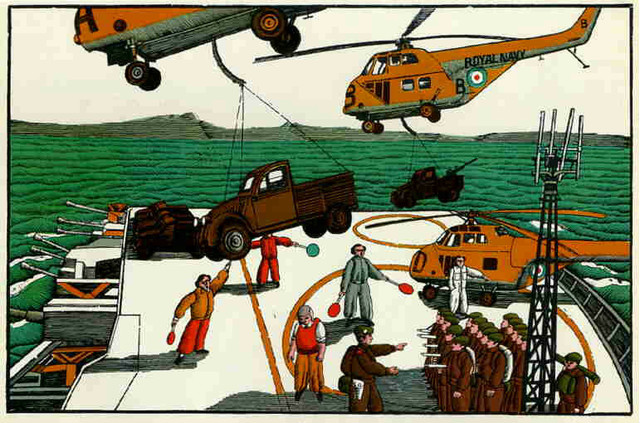
Plenty of cars have seen action in the theatre of war over the years, from the original Willys Jeep to armoured Rolls Royces and everything in between.
However, one of the lesser-known prides of Her Majesty’s Navy was actually the Citroen 2CV, which was adopted as an honorary member of the Royal Navy Commandos in 1959 aboard the HMS Bulwark.
The Navy was experimenting with the best way to quickly transfer troops from its aircraft carriers to the ground, aiming to shift commandos 95 miles or so inland as quickly as possible.
According to top brass, such an operation required a vehicle which was light, strong and easy to control and live with, and as a result sixteen 2CVs were chosen as the weapons of choice for the force. Lifted by helicopter with troops aboard and then dumped into enemy territory, the Navy was reportedly impressed with the dinky Frenchmobile’s hardiness.
Passing the test for military service and officially joining the ranks of some of the most elite corps of the British Navy, as odd as it was, the little 2CV became a four-wheeled soldier in its own right.
An unlikely hero but a hero nonetheless, the legendary Deux Cheveaux was indeed a little rough around the edges and pretty ugly to boot, but then look where that got John Wayne…
